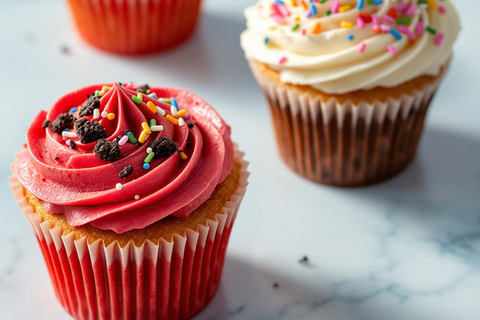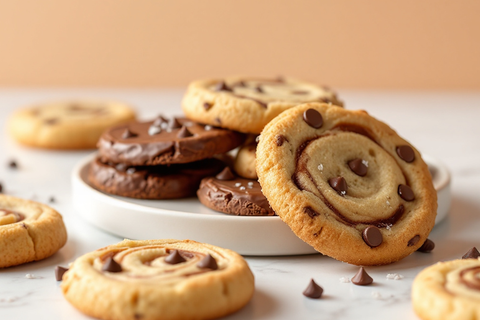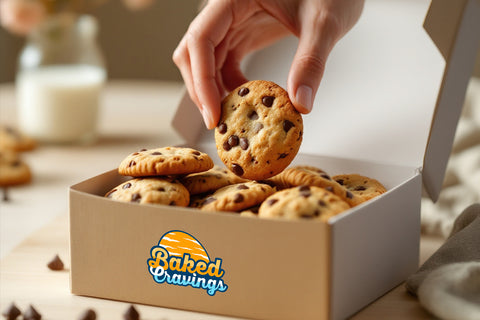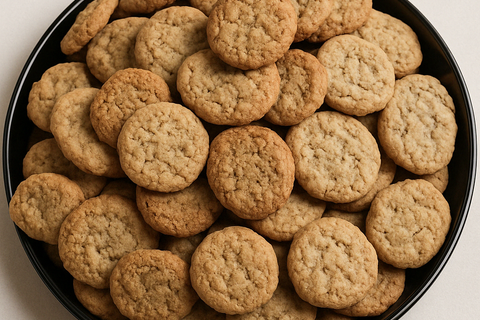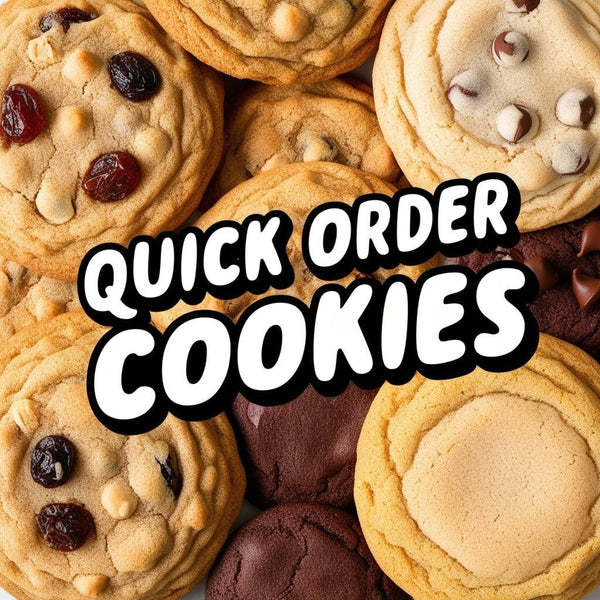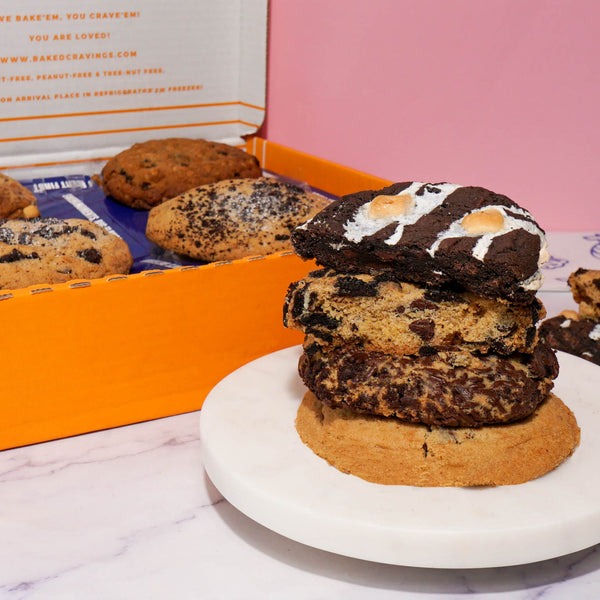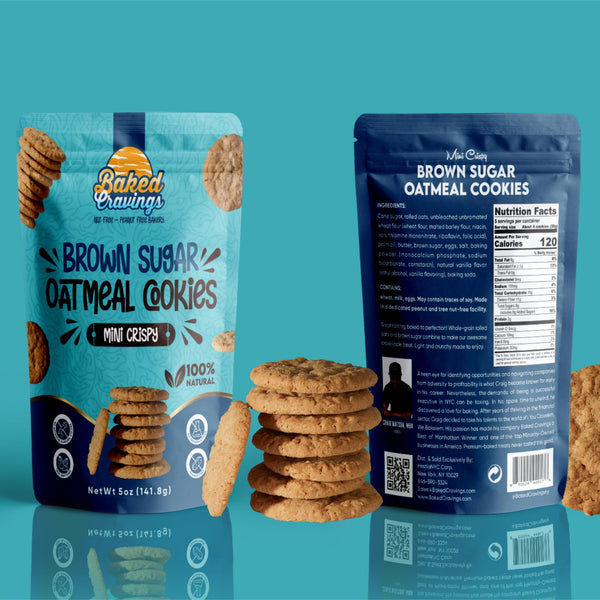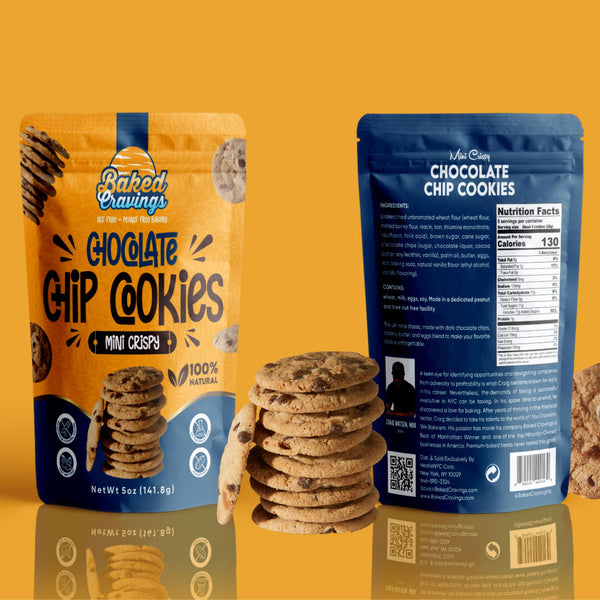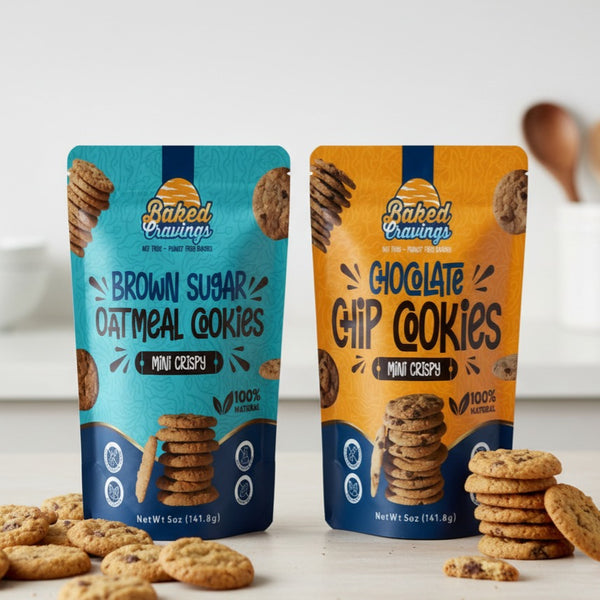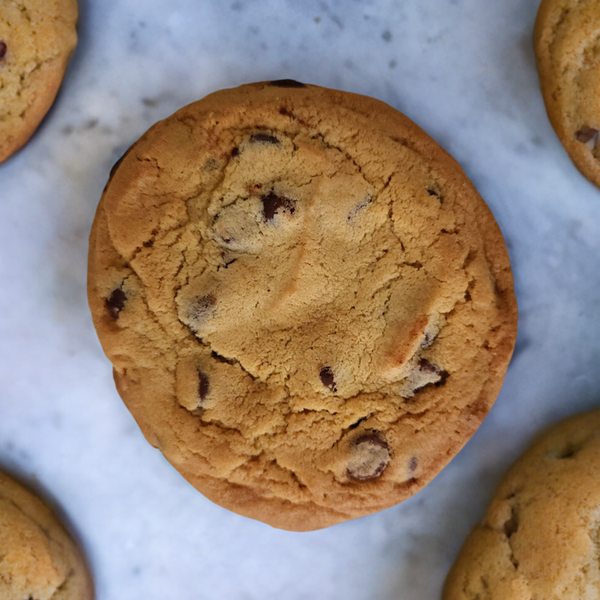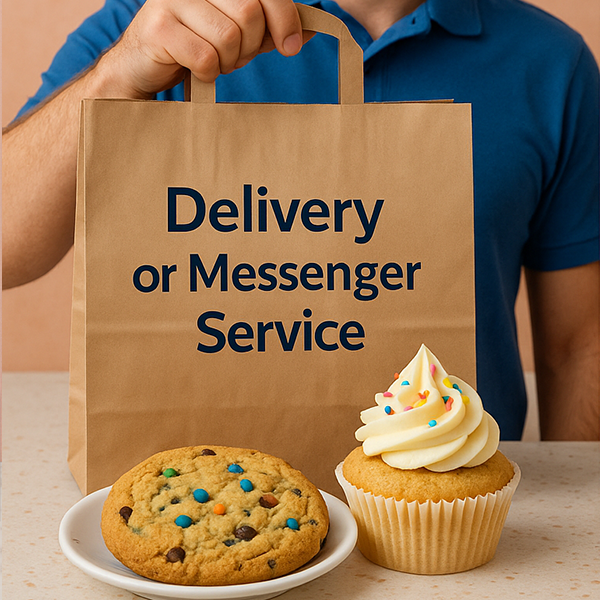Vanilla buttercream is a classic and versatile frosting that's perfect for topping cakes, cupcakes, and other sweet treats. Creating the perfect vanilla buttercream involves understanding the balance of ingredients and mastering the mixing technique to achieve a smooth, creamy, and flavorful frosting. In this article, we'll walk through the steps to make a delicious vanilla buttercream, from selecting the right base ingredients to adding the finishing touches for piping and decoration.
Key Takeaways
- Use room temperature unsalted butter to control the saltiness and achieve a creamy texture.
- Gradually beat in powdered sugar to prevent clumping and ensure a smooth consistency.
- Adjust the frosting's thickness by adding heavy cream tablespoon by tablespoon to reach the desired consistency.
- Incorporate vanilla extract for flavor enhancement and beat the mixture until it fluffs up to the ideal texture.
- For decorating, choose the appropriate piping tools and practice techniques for a smooth application and intricate designs.
Preparing the Base for Vanilla Buttercream

Choosing the Right Butter
The foundation of any great vanilla buttercream begins with choosing the right butter. Unsalted butter is the preferred choice for many bakers as it allows for complete control over the frosting's flavor. It's crucial to allow the butter to reach room temperature before starting your recipe. Room temperature butter ensures a smooth and even blend with other ingredients, avoiding any unwanted lumps.
When selecting your butter, remember that the quality of butter can significantly affect the taste and texture of your buttercream. Opt for high-quality, unsalted butter for the best results.
Here are a few tips to keep in mind:
- Always use unsalted butter to control the saltiness of your frosting.
- Butter should be at room temperature, not melted or cold from the refrigerator.
- The better quality ingredients you use, the better the taste of your buttercream will be.
Understanding the Role of Powdered Sugar
Powdered sugar, also known as confectioners' sugar, is a key ingredient in creating the structure and sweetness of vanilla buttercream. Its fine texture dissolves easily, ensuring a smooth and creamy consistency without the grittiness that granulated sugar could impart. Powdered sugar also contains a small amount of cornstarch, which helps to stabilize the frosting and prevent it from weeping or melting too quickly.
When adding powdered sugar to your buttercream, it's important to do so gradually. This allows for even distribution and prevents the sugar from clumping or creating air pockets within the mixture. Here's a simple guide to help you measure and mix powdered sugar effectively:
- Begin with sifted powdered sugar to remove any lumps.
- Add the sugar to the creamed butter in increments, mixing well after each addition.
- Adjust the sweetness and consistency by adding more or less sugar as needed.
Remember, the quality of your powdered sugar can affect the outcome of your buttercream. Always opt for a pure and finely ground product for the best results.
Incorporating powdered sugar correctly is not just about achieving the right sweetness level; it's about giving your buttercream the luxurious texture that makes it irresistible. A snippet from a popular recipe suggests combining powdered sugar with vanilla and milk to reach a drizzling consistency, highlighting the sugar's role in achieving the desired texture.
The Importance of Cream in Buttercream
Cream plays a pivotal role in creating the perfect buttercream. It's not just about adding liquid; it's about building an emulsion that combines fat and water harmoniously. Heavy cream is the preferred choice for its high-fat content, which contributes to the buttercream's luxurious texture. Room temperature cream is essential to prevent the frosting from separating or appearing grainy.
When incorporating cream, it's important to add it gradually. This methodical approach ensures that the frosting maintains a smooth, creamy consistency. The amount of cream added can also affect the frosting's stability, so it's crucial to measure accurately.
The gradual addition of cream is not just a step in the process; it's the secret to a frosting that's both stable and spreadable, without being too thick or cloying.
Remember, the quality of your cream will directly influence the final product. For the creamiest consistency, opt for heavy cream, but half-and-half or whole milk can be used in a pinch. The choice of dairy will dictate the richness of your buttercream, so choose wisely based on your desired outcome.
Mixing Ingredients for the Perfect Consistency

Incorporating Powdered Sugar Correctly
The key to a smooth and creamy vanilla buttercream is incorporating the powdered sugar correctly. Begin by adding the powdered sugar to the creamed butter gradually, about a quarter cup at a time. This slow addition prevents the sugar from clumping and ensures that it fully integrates into the butter, creating a uniform texture.
To achieve the best consistency, it's essential to mix the powdered sugar on the lowest speed until it's just incorporated. This minimizes the introduction of air and avoids overbeating, which can lead to a grainy texture.
Once all the sugar has been added, continue to mix on low for about one minute to ensure that the mixture is well combined and creamy. Remember to scrape down the sides and bottom of the bowl periodically to incorporate any sugar that may have settled. Adjust the consistency with a little milk or cream if necessary, but always start with the sugar to establish the base of your frosting.
Adjusting Consistency with Whipping Cream
Achieving the perfect consistency in vanilla buttercream is crucial for both taste and texture. Heavy cream is the secret to the creamiest buttercream. However, if heavy cream is not available, half-and-half or whole milk can be used as substitutes. Remember, the lower the fat content, the less creamy the frosting will be. It's essential to ensure that the cream is at room temperature to avoid separation or a grainy texture.
When incorporating cream, add it gradually while whipping the buttercream. This process allows the mixture to emulsify, creating a stable and fluffy frosting. If the buttercream appears too stiff, add a little more cream; if it's too runny, whip it a bit longer to incorporate more air and achieve the desired fluffiness.
The most important thing to remember is to never give up on your buttercream. It may look rough after adding cream, but with persistent whipping, it will come together. You cannot over-whip this frosting; the more you whip, the lighter it will become.
If you encounter any graininess, often a result of sugar not dissolving properly, re-whipping the frosting can help. For best results, use the paddle attachment and whip until smooth. Temperature plays a role, but it's not as critical as the whipping process itself. Keep going, and your buttercream will transform into a smooth, airy delight.
Adding Vanilla for Flavor Enhancement
The addition of pure vanilla extract is a pivotal moment in creating a delectable vanilla buttercream. It infuses the frosting with that classic, rich vanilla flavor that's unmistakable and elevates the overall taste. A teaspoon of vanilla extract is typically sufficient for most recipes, but feel free to adjust according to your preference for intensity.
When adding the vanilla extract, ensure that it is evenly distributed throughout the buttercream. This step will fluff up the frosting, giving it a luxurious texture that's a cross between traditional buttercream and whipped cream.
Remember, the quality of vanilla extract matters. Opt for real, high-quality vanilla extract over imitation for the best flavor. The extract works synergistically with the other ingredients, turning up the volume on the buttercream's taste profile. If you're feeling adventurous, consider other extracts like almond or orange to create unique flavor variations.
Mastering the Mixing Technique

Using the Right Kitchen Equipment
Selecting the appropriate kitchen equipment is crucial for making vanilla buttercream with the perfect texture. The right mixer and attachments can make all the difference in achieving that silky-smooth consistency. For instance, a stand mixer is often preferred for its power and hands-free operation, allowing for even mixing without manual effort.
When it comes to beaters, there are specific types designed for different tasks. A flat beater is ideal for versatile mixing tasks, while a wire whip is best suited for whipping creams to the right fluffiness. For those who enjoy making bread as well, a dough hook is an indispensable tool for kneading. It's important to use the correct beater to ensure the ingredients are mixed thoroughly without overworking the mixture.
Having the right tools not only simplifies the process but also enhances the quality of your buttercream. It's an investment in your baking that pays off in the delicious results you'll achieve.
Beating Butter to the Right Fluffiness
Achieving the right fluffiness in buttercream is a pivotal step in ensuring a smooth and spreadable consistency. Beat the butter until creamy, starting with butter that has been softened to room temperature. This initial step is crucial for a base that will whip up nicely.
Once the butter is smooth and creamy, gradually add in the powdered sugar, cream, and vanilla extract. Begin at a low speed to incorporate the ingredients without causing a powdery mess. Then, increase the mixer to medium-high speed to fully blend the components into a cohesive frosting.
Adjustments may be necessary to reach the perfect texture. If the frosting appears too thin, additional confectioners' sugar can be added. Conversely, if it's too thick, a splash of heavy whipping cream can help achieve the desired fluffiness. Remember, the quality of your ingredients plays a significant role, so use unsalted butter and high-fat heavy whipping cream for the best results.
- Beat butter until smooth and creamy
- Gradually add sugar, cream, and vanilla
- Adjust with more sugar or cream as needed
The process of beating the butter to the right fluffiness is not just about time but also about attention to detail and ingredient quality. A whole cup of heavy cream can give the frosting a lighter flavor and a fluffier texture, enhancing the overall experience of your buttercream.
Achieving the Ideal Frosting Texture
The quest for the ideal frosting texture is a delicate balance of ingredients and technique. A whole cup of heavy cream is often the secret to a lighter flavor and a fluffier texture, transforming the frosting into a velvety delight.
To ensure your buttercream achieves this coveted consistency, follow these steps:
- Add the vanilla extract as it begins to fluff, enhancing the flavor profile.
- Alternate the addition of powdered sugar and milk or cream, fully incorporating each before adding the next.
- Continue to beat the mixture until it reaches a light and fluffy state, perfect for spreading or piping.
Remember, the temperature of your ingredients can influence the outcome, but it's the beating process that truly aerates the frosting, giving it that dreamy, creamy texture. For those looking to decorate with their buttercream, consider increasing the amounts slightly to ensure there's enough to cover all your creative needs.
Finishing Touches and Flavor Adjustments

Balancing Sweetness with Salt
When crafting the perfect vanilla buttercream, the sweetness can sometimes be overwhelming. A pinch of salt can be the secret ingredient that transforms your frosting from overly sweet to perfectly balanced. Salt enhances the flavors and cuts through the sugar, providing a more complex taste profile.
While it might seem counterintuitive to add salt to a sweet frosting, the right amount can make all the difference. It's not about making the buttercream salty; it's about using salt to highlight the vanilla and creamy flavors.
Here's a simple guide to get the balance right:
- Start with a small pinch of salt and mix thoroughly.
- Taste the buttercream and add more salt if needed, but do so sparingly.
- Remember that different salts have varying levels of saltiness, so adjust according to the type you're using.
Achieving the perfect balance between sweet and savory notes in your vanilla buttercream will elevate your desserts to a new level of deliciousness.
Customizing Buttercream Variations
Once you've mastered the classic vanilla buttercream, the possibilities for customization are endless. Experimenting with different flavors and colors can transform your desserts into unique creations. For instance, adding a couple of drops of gel food coloring can result in a vibrant spectrum of shades without altering the consistency of your frosting.
To infuse your buttercream with new flavors, consider incorporating citrus zest, melted chocolate, or various extracts. Here's a simple guide to get you started:
- Citrus Buttercream: Add 1 tsp of lemon or orange zest.
- Chocolate Buttercream: Mix in 1/2 cup of cooled, melted chocolate.
- Coffee Buttercream: Dissolve 1 tbsp of instant coffee in 1 tsp of hot water, then blend into the frosting.
Remember, when adding liquid ingredients like extracts or coffee, do so sparingly to maintain the buttercream's structure.
For those looking to achieve a bakery-style finish without the piping skills, a butterknife or cake spatula can be used to apply a smooth layer of buttercream. The key is to spread evenly for a professional look. If you encounter bubbles in your buttercream, simply fold the frosting with a spatula until the texture is consistent once again.
Ensuring the Frosting Holds its Shape
To ensure your vanilla buttercream maintains its form, especially in warmer climates, keep the frosted creations refrigerated until just before display. Once served, position them away from direct sunlight to prevent softening. For immediate use, the frosting should be at room temperature to avoid a crusty surface.
Adjusting the buttercream's consistency is crucial for it to hold its shape. If the mixture is too stiff, a small amount of milk or cream can be added. Conversely, if it's too soft, incorporate more powdered sugar. This balance is key for a buttercream that's both stable and spreadable.
The Ultimate Guide to Crafting Silky Smooth Vanilla Buttercream emphasizes the importance of a buttercream that's firm enough for piping yet pliable for a smooth finish. Remember, the goal is a buttercream that holds its shape for piping yet spreads effortlessly for a smooth finish.
In hot weather, consider using a blend of butter and vegetable shortening for a firmer result. The addition of meringue powder, while optional, can also assist in maintaining the frosting's structure. Here's a quick checklist to help you ensure your buttercream stays perfect:
- Refrigerate until serving
- Keep away from direct sunlight
- Adjust consistency with milk or cream
- Add more powdered sugar if too soft
- Use shortening and meringue powder for firmer frosting
Decorating with Vanilla Buttercream

Choosing the Right Piping Tools
Selecting the appropriate piping tools is crucial for achieving the desired look and precision in your buttercream decorations. A variety of piping tips can create different textures and patterns, from the classic rose to intricate ruffles. For instance, the Wilton 1M tip is renowned for its versatility, allowing decorators to craft roses and soft-serve ice cream-like swirls with ease.
When it comes to detailed work, the Wilton 12 small round tip is ideal for its simplicity and smooth application, especially with silky creamy frostings. It's essential to have a range of tips to cater to different styles and techniques.
Remember, the quality of your tools can significantly impact the final presentation of your cake. Investing in reliable brands like Thermoworks and King Arthur can make a substantial difference in your decorating experience.
Below is a list of some popular piping tips and their uses:
- Wilton 1M (Rose) – Perfect for classic roses and soft-serve swirls.
- Wilton 8B – An all-time favorite for various patterns.
- Ateco 849 – Ideal for wide patterns, such as roses and ruffles.
- Wilton 12 small round – Best for smooth, creamy frostings without detailed edges.
Techniques for Piping onto Cupcakes and Cakes
Mastering the art of piping can transform your cupcakes and cakes from simple to spectacular. Choosing the right piping tip is crucial for achieving the desired effect. For instance, a large round piping tip, like the Wilton 1A, is ideal for creating smooth, rounded dollops that can give your cupcakes a ghostly appearance. A grass tip can add texture, perfect for crafting bird's nest cupcakes, while writing tips are versatile for adding personalized messages or intricate designs.
When it comes to buttercream, its creamy texture not only tastes delightful but also holds shapes well, making it suitable for piping complex patterns.
Remember, the key to successful piping is not just the tools but also the technique. Practice steady pressure and smooth motions to ensure even application. If you're new to piping, start with these essential tips:
- Large round tip for dollops
- Grass tip for textured effects
- Writing tips for detailed work
For those who prefer a simpler approach, applying buttercream with a spatula and forgoing piping altogether is also an option. Whichever method you choose, the goal is to enhance the visual appeal of your baked creations while maintaining the delicious taste of your vanilla buttercream.
Tips for Smooth Application and Detailed Designs
Achieving a smooth application and creating detailed designs with vanilla buttercream can elevate your baked creations to a professional level. The key to success lies in the consistency of the buttercream and the tools you use. For intricate designs, consider using a variety of piping tips to add texture and detail. Here's a basic list of tips that can help you get started:
- Wilton 1A: Ideal for making large, smooth dollops.
- Grass tip: Perfect for creating grass-like effects.
- Writing tips: Essential for adding written messages or delicate vines.
- Wilton 12: A small round tip for silky, creamy textures.
- Ateco 808: A large round tip for fluffy, cloud-like decorations.
Remember, practice makes perfect. Start with simple designs and gradually work your way up to more complex patterns. The more you practice, the more confident you'll become in your piping skills.
When you're not in the mood for piping, or if you're aiming for a more rustic look, applying buttercream with an offset spatula can be just as effective. The goal is to achieve a balance between the sweetness of the buttercream and the visual appeal of your decoration. A pinch of salt can help balance the flavors and ensure that your frosting is not overly sweet. With patience and the right techniques, your vanilla buttercream will not only taste delicious but also look stunning.
Conclusion
Mastering the art of making vanilla buttercream is a delightful skill that can elevate any homemade cake or cupcake. By following the steps outlined in this article, you've learned how to beat the butter to a light and fluffy consistency, incorporate powdered sugar for sweetness and stability, and add whipping cream for that irresistible creaminess. Remember to adjust the heavy cream to achieve your desired consistency, whether you're aiming for pipable perfection or a smooth spread. With a little practice and the right kitchen supplies, you'll be creating delectable desserts topped with your own creamy vanilla buttercream in no time. So go ahead, frost your creations, and enjoy the sweet satisfaction of your homemade buttercream masterpiece.
Frequently Asked Questions
What type of butter is best for making vanilla buttercream?
Though salted butter can be used, it is recommended to use unsalted butter to control the added salt. Ensure the butter is at room temperature before beating it until smooth and creamy.
How do I incorporate powdered sugar into the buttercream without making a mess?
Start with the mixer off and add half of the powdered sugar. Turn the mixer on low and beat until incorporated, scraping down the sides as needed. Repeat with the remaining powdered sugar.
Can I adjust the consistency of the buttercream?
Yes, you can adjust the consistency by adding the whipping cream tablespoon by tablespoon until the desired consistency is reached. For stiffer buttercream, add less cream; for a smoother spread, add more.
How do I achieve the perfect texture for my vanilla buttercream?
Beat the butter until it is light and fluffy, then gradually add sugar, cream, and vanilla extract. Beat on low speed until these ingredients are incorporated, then increase the speed to medium-high. Adjust with more sugar or cream as necessary.
What kitchen tools do I need to make vanilla buttercream?
You'll need a hand mixer or a stand mixer with the whisk attachment, a rubber spatula for scraping the bowl, measuring cups and spoons, and optionally, a piping bag and tips for decorating.
How can I customize the flavor of my vanilla buttercream?
Vanilla buttercream is a versatile base. You can create different flavors by substituting the vanilla extract with other extracts or additives. For example, try adding pumpkin spice for a seasonal twist.
